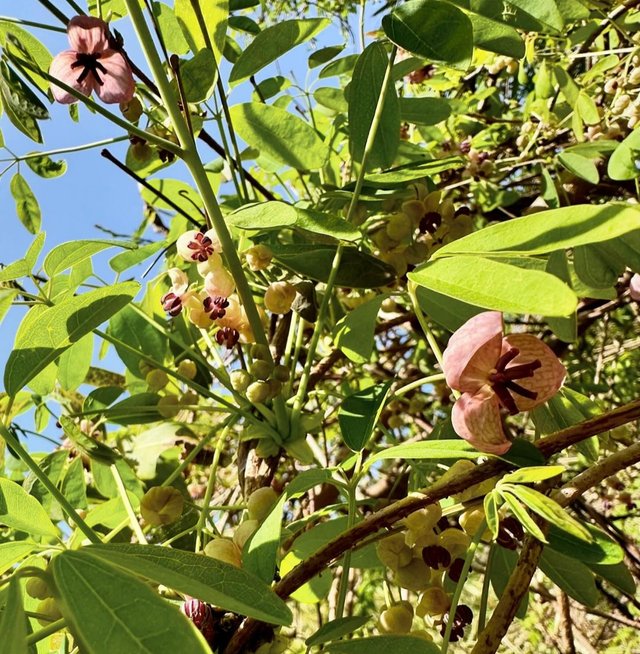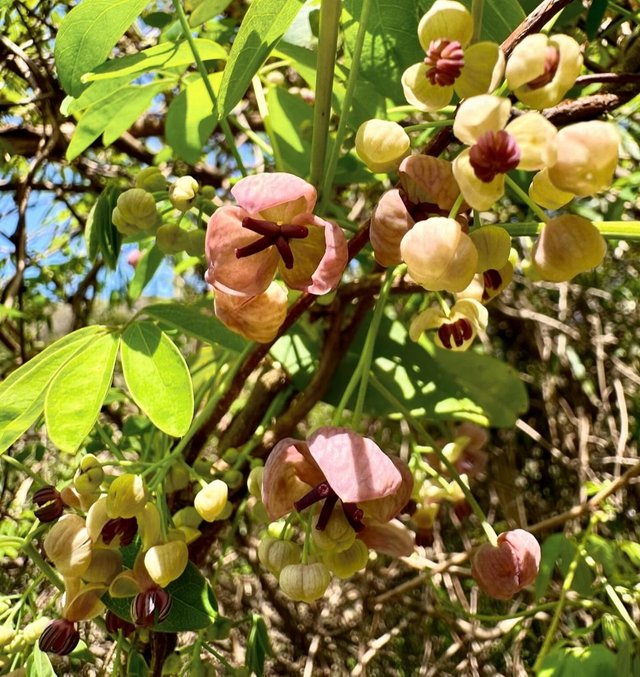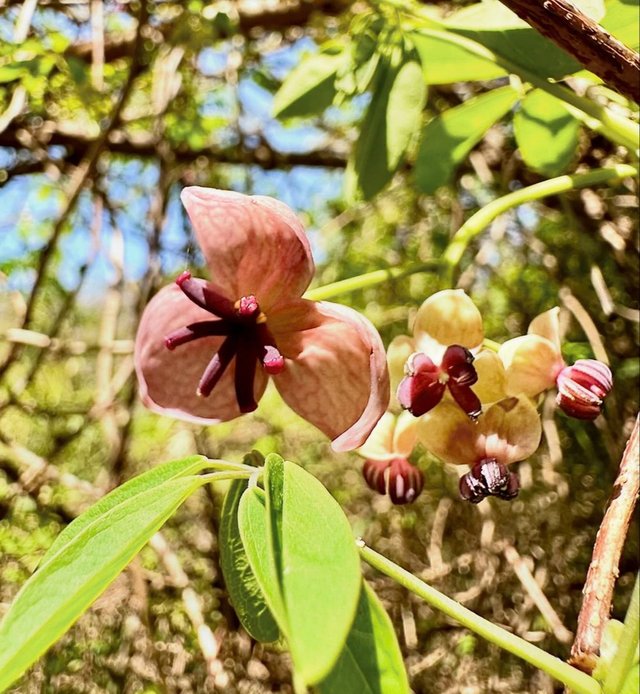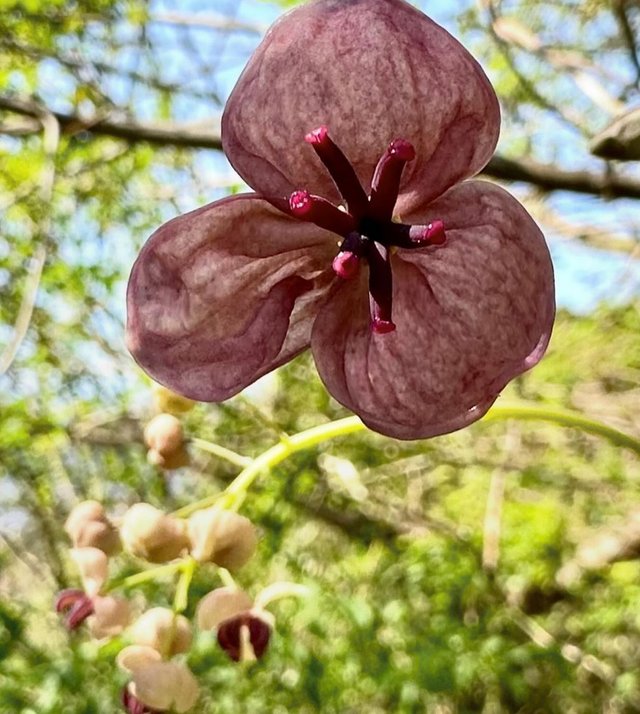Chocolate Vine Flower So Beautiful
Chocolate vine, also known as Akebia quinata, is a fascinating and versatile plant that captivates both gardeners and nature enthusiasts alike. Native to East Asia, particularly China, Japan, and Korea, this woody vine has found its way into gardens and landscapes around the world due to its unique characteristics and ornamental appeal.
One of the most striking features of the chocolate vine is its exotic-looking flowers. In early spring, before the foliage emerges, clusters of deep purple to reddish-brown flowers appear, resembling small chocolate-colored bells or cups. The flowers have a sweet, vanilla-like fragrance that attracts pollinators such as bees and butterflies, adding to the vine's allure.
As the flowers fade, they give way to elongated, sausage-shaped fruits that ripen in late summer to early fall. These fruits are edible, though they are not as commonly consumed as those of other fruit-bearing vines. The taste is described as mildly sweet with a hint of tartness, and some liken it to a blend of banana, passionfruit, and melon. While not widely cultivated for its fruit, the chocolate vine's edible offerings add another layer of interest for those looking to explore unusual garden fare.
Beyond its aesthetic and edible qualities, chocolate vine is valued for its adaptability and resilience. It is a vigorous grower, capable of climbing to great heights with the aid of its twining stems. This makes it an excellent choice for covering fences, trellises, arbors, and other structures, providing both beauty and shade in the garden landscape.
Furthermore, chocolate vine is relatively low-maintenance once established. It thrives in well-drained soil and prefers a sunny to partially shaded location, though it can tolerate a range of light conditions. While it benefits from occasional pruning to control its growth and shape, it is not overly aggressive or invasive like some other vine species.
Despite its many virtues, it's worth noting that chocolate vine can be invasive in certain regions where it is not native. In areas with mild climates and fertile soil, it has the potential to spread quickly and outcompete native vegetation, leading to ecological imbalances. As such, it's important for gardeners to exercise caution and consider the potential impact on local ecosystems before planting chocolate vine in their gardens.




